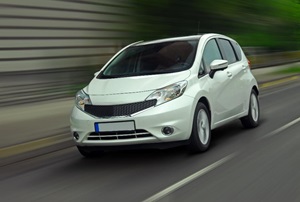- Transportation Efficiencies
- EV Charging Infrastructure
- Vehicle to Grid
India Gears Up for EVs

In 2017, governing officials announced that India plans to sell only electric cars by 2030. The announcement was part of larger climate goals put in place by the country under the Paris Agreement—goals which the country is currently projected to meet despite being the third-largest polluting country on the planet and home to over 1.3 billion people. Some speculation of whether this market shift is possible in the allotted time period has surrounded the announcement, but banning the sale of conventional, gas, and diesel-fueled vehicles has become more popular in recent months, especially across Europe with France and the UK announcing bans by 2040. With some of the world’s most polluted cities, meeting its all-electric sales goal will help India reduce emissions and meet climate goals.
Steps to Promoting EVs
Since India’s announcement of EV-only sales by 2030, several steps to increase adoption have occurred throughout the country:
- Partnerships will allow for collaboration on EV and mobility technology as follow:
- Toyota and Suzuki announced in November 2017 that they will co-deploy EVs for the Indian market beginning 2020.
- Mahindra and Renesas have partnered to place Renesas as the technology partner of the Mahindra Racing Formula E team. The technology will be used to produce electric road cars as well.
- Ola will partner with Tata Motors to add EVs to Ola’s cab fleet in Delhi.
- Uber has inked a collaboration with Mahindra to pilot EVs in Delhi and Hyderabad by March 2018. The two will also collaborate with other stakeholders to set up public charging stations in major cities around India.
- Tata Motors announced a partnership with Jayem Auto to launch the Nano EV under the name Jayem Neo.
- New market entrants will allow for increased adoption rates.
- Hyundai Ioniq plug-in hybrid will be released in India in 2018.
- Honda’s Indian subsidiary is in the process of adopting an EV strategy that allows for affordable vehicles suitable for Indian roads.
- Suzuki, with its partnership with Toyota discussed above, will produce EVs for the Indian market with technical support from Toyota.
- Government policy announcements promoting adoption and awareness of EVs are now occurring routinely.
- The government introduced smart chargers for EVs in December, with a plan to install 150 of the charging stations in the next 12 to 18 months.
- The Maharashtra government is finalizing purchasing EV incentives for manufacturers and consumers—additionally, the national government is reportedly in talks to release purchasing incentives.
- The national government approved standards for EV charging stations via suggestions from the Committee for Standardization of the Protocol for Charging Infrastructure.
- The national government approved use of digital payments for charging of EVs.
Challenges Remain
The actions put forth to increase adoption and awareness of EVs in the Indian market are encouraging, but challenges remain for such a large market, leading to more doubts that the country will be able to reach its 2030 goal. Since charging infrastructure is crucial to adoption, the country will need to rapidly continue expansion of charging station installation, particularly in densely packed cities. Over 90% of EVs sold in India in 2016 were two-wheel vehicles, meaning OEMs will need to tailor model availability to this more popular market segment in India, in addition to four-wheel EVs. Finally, purchase incentives from differing levels of government could spur adoption by making vehicles more affordable in a country which ranked 150 globally in gross national income per capita in 2015.